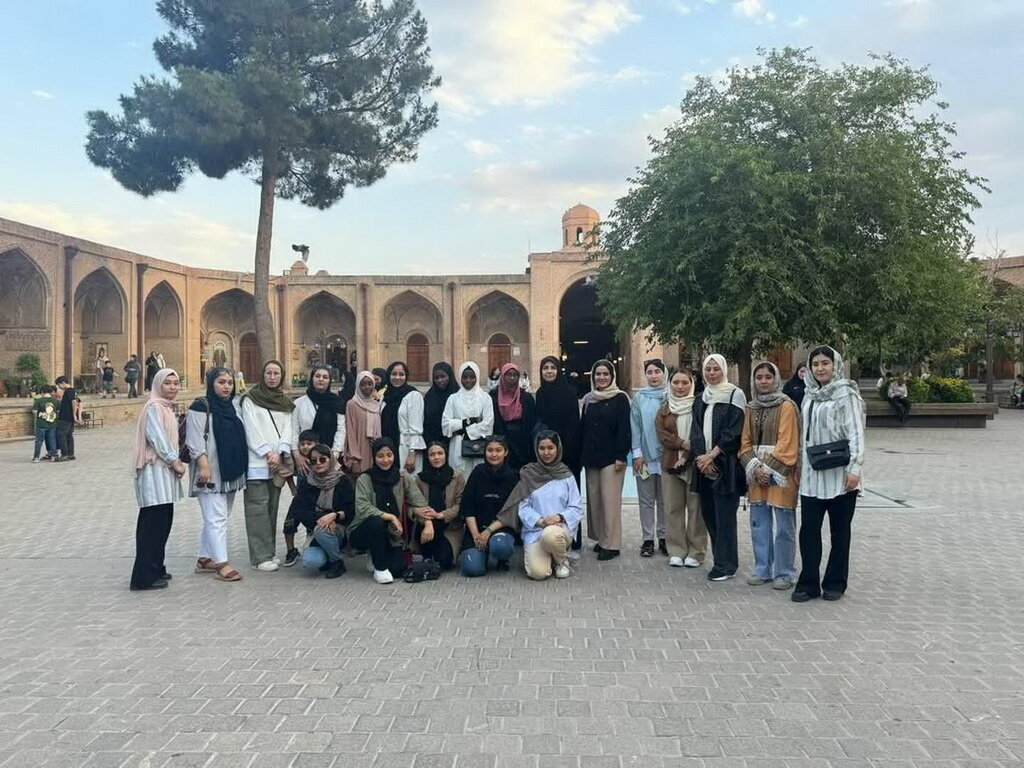Qazvin makes a big hit with intl. students

TEHRAN – Tens of international students hailing from some 50 countries, have explored Qazvin’s places of interest in a one-day tour.
More than 200 foreign students from 48 universities across the country, paid visits to touristic attractions of Qazvin on Tuesday, CHTN reported.
The students, who were in the city to participate in the second Cultural-Sports Olympiad of Imam Khomeini International University, taking place from July 18 to 26, had stops at Safavid Garden and Historical Complex, Chehel Sotun Palace, and UNESCO-listed Sa’d al-Saltaneh Caravanserai, according to the report.
As the final destination of the journey, the visitors explored the Anthropology Museum of Qajar Bathhouse, immersing themselves in the rich culture of the historic city.
Situated some 150 km northwest of Tehran, Qazvin was the capital of the Safavid Empire for over forty years (1555–1598 CE) and is nowadays known as the calligraphy capital of Iran.
Moreover, the province is a major tourist destination with a wonderfully restored caravanserai-turned-arts precinct, some quirky museums, and a handful of decent eating options. For most travelers, Qazvin is also primarily the staging point for excursions to the famous castle of the Assassins and trekking in the sensational Alamut Valley.
Also known as the castle of the Assassins, the 12th-century Alamut castle is nestled on top of a peak. It was once a shelter for the followers of Hasan-e Sabbah (1070–1124 CE) who was a spiritual leader of an Islamic sect. In the early 1930s, British-Italian explorer and travel writer Freya Stark described her exploration of the place in her book “The Valleys of the Assassins.”
Qazvin is also home to one of the biggest roofed caravanserais in the country, Sa’d-al Saltaneh caravanserai. Dating back to the Qajar era, it’s a place for discovering tens of Hojreh shops, cafes, yards, and a stunning mosque. The city is a place for visitors who want to experience the culture, cuisine, and hospitality of Iran.
XF/AM
